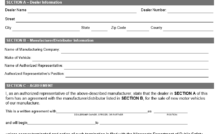Fee Agreement Template
A fee agreement is aimed at securing two or more parties together for a specific time period. The basis of this agreement is that one of the parties provides the other some services and charges a fee. The party that provides the services is called the contractor or supplier, while the receiving party is called the recipient. The focus of this agreement is to make sure both the parties are assigned their respective responsibilities relating to the contract and that they both are aware of the amount of fee that will be charged and other important factors related to it. It is important to write down all of these things in an agreement form because it helps to avoid misunderstandings and disputes during or after the deal has been closed. However, the recipient is allowed to negotiate over some terms if they find them suitable.
Hence, it is extremely important for the recipient to go over all the terms and facts written in the agreement and think them over once, then sign the agreement. Negotiation after signing the agreement is not considered ethical, it’s better done before the signature. There are generally two copies of the agreement form, one for each party.
Content of a Fee Agreement
The contractor of the agreement is the one who makes the agreement form. A fee agreement should be composed of the following elements:
1. The date on which the fee agreement will be activated.
2. The names of the parties (supplier and recipient) and their respective contact information and address.
3. List of services that will be provided by the supplier to the recipient.
4. The payment or fee for the services, on which date the recipient has to pay the amount, the method or transaction (debit, credit, check, cash). It must also be specified if the fee will be paid in a lump sum or in installments. In case of installments, how many installments will be paid? If any discounts or offers are provided to the recipient, they must be specified as well.
5. The date on which the agreement will expire. the supplier will stop providing the services until the agreement is renewed.
6. The confidential information about the contract. This means the contractor has to state all the people that are allowed to be aware of this agreement.
7. Indemnification rights of both parties. This includes the security of the services, and further use of the services.
8. The signature of both the parties.
Advantages of a Fee Agreement
A fee agreement benefits both parties in multiple ways.
• By writing down all the terms and conditions of the agreement, the supplier can easily get all their points delivered to the recipient, whereas verbally, a lot of points can be missed.
• The agreement form helps to avoid disputes between the two parties.
• The agreement assigns both the parties their respective responsibilities.
• In case of any fraud or betrayal from either party, the agreement can be used as a legal document as proof.
Template for Fee Agreement
Recent Posts
Sales Invoice Template
A sales invoice template is used to create quality invoice templates which a user can use to design their own invoices, whether in a hard copy or soft copy. Mostly, it is prepared by the seller or any other nominated party, when selling the product or inventory to a regular… Read More
Service Invoice Template
The service invoice template is a legal document that is used when a business or an individual is providing services against a fee. It is equipped with the detailed billing information of the client who is receiving your services. A service invoice features the full details of the billing transactions… Read More
Medical Invoice Template
A medical invoice template is a professional document which businesses linked to the medical sector frequently use. In certain cases, a licensed medical practitioner can issue this invoice when selling medical equipment to a medical center, hospital, clinic or to a doctor. Basically, this invoice asks the buyer to make… Read More
Purchase Invoice Template
A purchase invoice template is a computer generated slip which can be used in soft copy as well as in the form of hard copy. Usually, it is provided by a seller to the buyer, describing the list of goods, products or services including the size and color of what… Read More
Tax Invoice Format
A tax invoice format is a legal and highly professional document which is issued by the registered business vendor to a registered purchaser, no matter whether it is in soft copy or in hard copy. Basically, there are two main types of any invoice; one is the tax invoice and… Read More
Blank Invoice Template
A blank invoice template is a highly professional computer-generated invoice either in hard or soft form, by the seller or any other nominated party, upon the request of a regular or a prospective buyer. This invoice helps you with managing all your business documents where you are required to record… Read More

